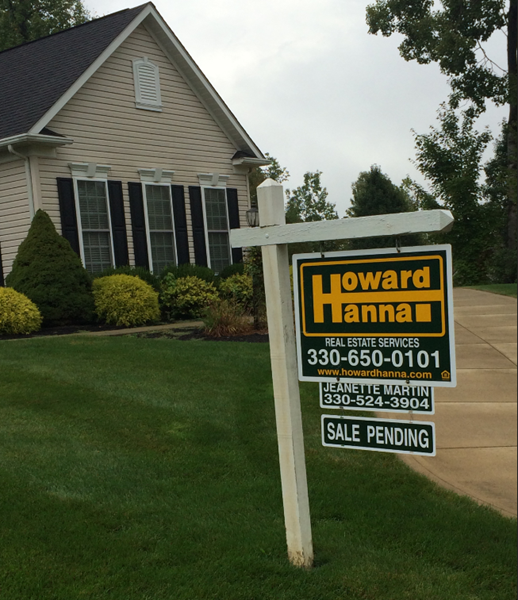Steel Markets

Existing Home Sales Fall for Third Month
Written by Sandy Williams
July 24, 2018
A housing shortage is impacting existing home sales and pushing prices to a new high, reported the National Association of Realtors. The June data from NAR shows existing home sales decreased 0.6 percent in June, falling for the third month in a row and the fifth time this year. Sales were at a seasonally adjusted annual rate of 5.38 million, from a downwardly revised 5.41 million in May.
“There continues to be a mismatch since the spring between the growing level of homebuyer demand in most of the country in relation to the actual pace of home sales, which are declining,” said NAR Chief Economist Lawrence Yun. “The root cause is without a doubt the severe housing shortage that is not releasing its grip on the nation’s housing market. What is for sale in most areas is going under contract very fast and in many cases has multiple offers. This dynamic is keeping home price growth elevated, pricing out would-be buyers and ultimately slowing sales.”
 Inventory was actually higher in June, climbing 4.3 percent to 1.95 million existing homes available for purchase. On a year-over-year basis, inventory rose for the first time since June 2017, increasing 0.5 percent from a year ago. Inventory is at a 4.3-month supply at the current sales rate, up from 4.1 months in May and 4.2 months a year ago.
Inventory was actually higher in June, climbing 4.3 percent to 1.95 million existing homes available for purchase. On a year-over-year basis, inventory rose for the first time since June 2017, increasing 0.5 percent from a year ago. Inventory is at a 4.3-month supply at the current sales rate, up from 4.1 months in May and 4.2 months a year ago.
“It’s important to note that despite the modest year-over-year rise in inventory, the current level is far from what’s needed to satisfy demand levels,” added Yun. “Furthermore, it remains to be seen if this modest increase will stick, given the fact that the robust economy is bringing more interested buyers into the market, and new home construction is failing to keep up.”
Prices for single-family homes continued to rise in June, up 5.2 percent year-over-year to a median price of $279,300. The median price for existing condos and co-ops increased 4.9 percent to $258,100.
“Existing home sales have plateaued over the past year and a half, even as prices have risen to new highs – yet another signal that the post-recession rebound in home buying has seemingly run its course,” said Aaron Terrazas, a senior economist for Zillow. “Today’s data will undoubtedly raise questions as to whether the housing market has reached an inflection point after years of sellers holding the upper hand — even though any gains for buyers at this point will be marginal, at best, and in the near term the market is more likely to become simply less frenetic and not meaningfully slower.”
“If there is some good news it’s that inventory seems to have reached a floor and has been mostly stable since the end of 2017,” added Terrazas. “Still, even though inventory has bottomed out, it isn’t yet climbing back up toward more normal levels—and overall numbers mask a big divide between the top and bottom of the markets. Builders are focused largely at the top of the market, and buyers at the highest price points may find things slowly shifting in their favor over the next few months. But the market remains very competitive for entry-level homes.”
The regional breakdown of sales and pricing in June was as follows:
- Northeast: up 5.9 percent to an annual rate of 720,000; median price up 3.3 percent y/y to $305,900
- Midwest: up 0.8 percent to an annual rate of 1.27 million; median price up 3.5 percent y/y to $218,800
- South: down 2.2 percent to an annual rate of 2.25 million; median price up 2.7 percent y/y to $237,500
- West: down 2.6 percent to an annual rate of 1.14 million; median price up 10.2 percent y/y to $417,400

Sandy Williams
Read more from Sandy WilliamsLatest in Steel Markets

CMC looks beyond Arizona micro-mill woes to long-term viability of construction mart
Despite the economic and geopolitical upheaval of the last five years, CMC President and CEO Peter Matt points out that the construction market has been an essential element of the way forward.

US importers face stricter rules under revamped S232 tariffs
“CBP expects full compliance from the trade community for accurate reporting and payment of the additional duties. CBP will take enforcement action on non-compliance," the agency said in a March 7 bulletin.

Steel exports rebound in January
US steel exports recovered to a five-month high in January after having fallen to a two-year low in December. This growth follows four consecutive months of declining exports.

Construction spending drops marginally in January
Construction spending edged down slightly in January, slipping for the first time in four months. The US Census Bureau estimated spending at a seasonally adjusted annual rate of $2,196 billion in January, down 0.2% from December’s downward revised rate. The January figure is 3.3% higher than a year ago. January’s result, despite the slight erosion, […]

HVAC equipment shipments slow in December but strong annually
Shipments of heating and cooling equipment in the US fell to an 11-month low in December, according to the latest data released by the Air-Conditioning, Heating, and Refrigeration Institute (AHRI).
